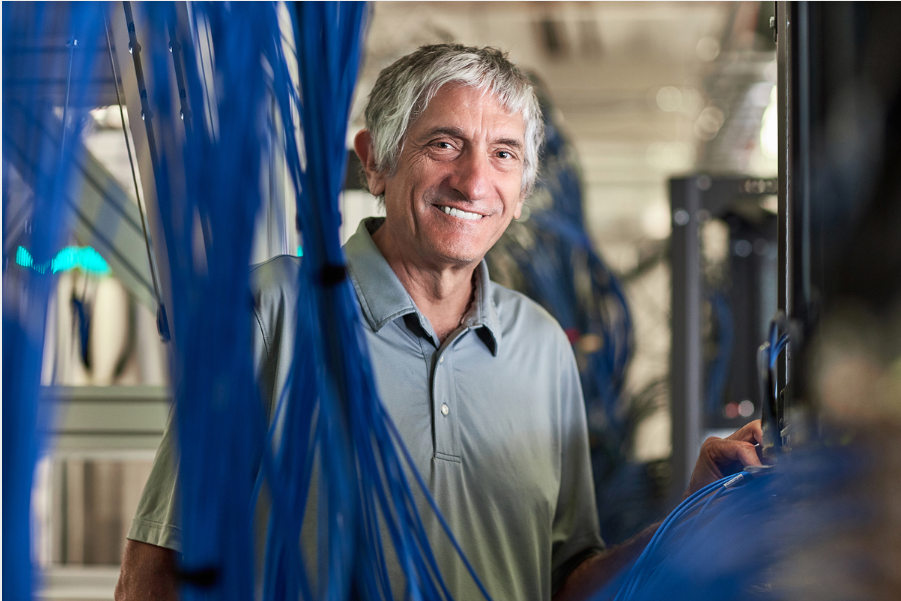
‘A New Era of Computing’
In October 2019, a group of scientists unveiled history in the form of 53 entangled quantum qubits, the first to solve — in mere minutes — a problem considered intractable for classical computers. This feat of quantum supremacy signaled a new era of ultrafast computing, allowing us to approach problems previously considered impossible. For UC Santa Barbara physicist John Martinis, who led that team of Google/UC Santa Barbara scientists, it was decades of work come to fruition.
For “his innovations in the design and control of superconducting devices, in particular his leadership in devising low-error multi-qubit superconducting chips, which has resulted in the first plausible claim of quantum supremacy, ushering in a new era of computing,” the University of Toronto’s Centre for Quantum Information and Quantum Control (CQIQC) has awarded Martinis the John Stewart Bell Prize for Research on Fundamental Issues in Quantum Mechanics and Their Applications.
“I am deeply honored to receive the Bell Prize,” Martinis said. “I wish to thank the many scientists and UCSB students that I have had the pleasure to collaborate with during the past decade. Only by working together as a team was this possible.”
“I congratulate John Martinis on this prestigious recognition,” said Pierre Wiltzius, dean of mathematical, life and physical sciences at UC Santa Barbara. “He is a true pioneer in his field, building computers that allow unprecedented access to quantum computation, quantum cryptography and quantum control. We are thrilled to be able to call him an esteemed member of UC Santa Barbara’s faculty.”
At the heart of Martinis’ accomplishment is the superconducting Josephson-junction qubit, an architecture that realizes the complex and powerful quantum nature of an atom with all its possible states and superpositions, but in a form that can be fabricated, controlled, tuned and aggregated into a circuit. By cooling these qubits to within absolute zero, the materials in them lose their normal electrical resistance and enter a superconducting state, which is essential for maintaining the coherence of the system — its ability to reliably and rapidly compute.
In a series of milestones over several decades, Martinis and his research team have built and demonstrated the capabilities of their quantum system, with findings and improvements that have advanced the field. His research picked up speed in 2014 when he joined Google, leading a large team in the creation of a multi-qubit programmable processor. According to CQIQC, “this team has excelled in its relentless focus on optimizing device performance by implementing successful engineering choices for qubit design, couplers and scalable input/output.”
These successful engineering choices have also resulted in high-fidelity quantum circuits, using redundant qubits to check for errors; as well as reducing crosstalk between qubits via the development of a tunable coupling, in addition to developing fast multiplexed quantum measurement.
The outcome of all this groundbreaking research? Fifty-three entangled qubits in the Sycamore chip — “a crowning achievement of John Martinis’ many-year commitment to building multi-qubit superconducting processors,” according to CQIQC. The device set a new bar for quantum computers and earned its creators the distinction of being the first to develop a quantum computer that can outperform the best modern classical computer.
Martinis will receive the Bell Prize and will present a talk at the virtual 2021 Bell Prize ceremony on June 1.
The biennial John Stewart Bell Prize for Research on Fundamental Issues in Quantum Mechanics and their Applications was established in 2009, and is awarded every odd-numbered year, for significant contributions first published in the preceding six years. The award is meant to recognize major advances relating to the foundations of quantum mechanics and to the applications of these principles — this covers, but is not limited to, quantum information theory, quantum computation, quantum foundations, quantum cryptography and quantum controls.



